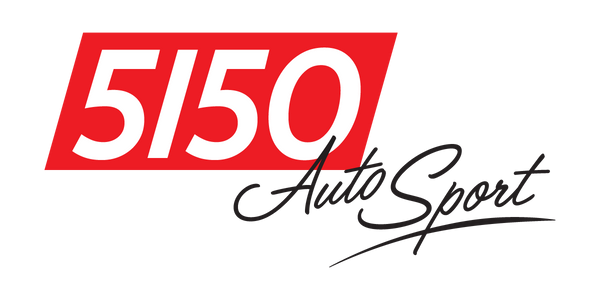
Engine Break-In After Re-Assembly
So you just finished assembling your high-performance engine build and re-installed it in your BMW. Now what? Proper engine break-in is a crucial step in ensuring the longevity and performance of your new build. At 5150 AutoSport, we highly recommend following an industry-accepted break-in procedure using high-quality break-in oil, such as Driven Racing Oil BR30 5W-30 Conventional Break-In Oil.
Why is Engine Break-In Important?
Engine break-in is the process of seating piston rings, establishing proper wear patterns on camshaft lobes, and ensuring all metal surfaces mate correctly under controlled conditions. This prevents premature wear, oil consumption issues, and performance loss down the road.
Choosing the Right Break-In Oil
Using a proper break-in oil is essential for protecting the engine during this critical phase. Driven Racing Oil BR30 is designed specifically for engine break-in, with high levels of ZDDP (Zinc Dialkyldithiophosphate) to provide anti-wear protection while promoting proper surface mating. Unlike modern full-synthetic oils that contain detergents, BR30’s low-detergent formula allows the ZDDP to adhere properly to ferrous metal surfaces, ensuring optimal break-in performance.
Step-by-Step Break-In Procedure
1. Initial Start-Up (First 30 Minutes)
-
Prime the oiling system before initial start-up to ensure oil reaches critical components.
-
Start the engine and immediately bring the RPM up to 2,000–2,500 RPM for at least 20–30 minutes to properly break in the camshaft (especially for flat tappet and aggressive roller valve trains).
-
Monitor oil pressure, coolant temperature, and listen for any unusual noises.
-
Avoid idling for extended periods, as this can prevent proper ring seating.
2. First Oil Change (After Initial 30 Minutes)
-
Shut off the engine and allow it to cool.
-
Drain the break-in oil and replace the oil filter.
-
Refill with fresh Driven BR30 break-in oil to remove wear metals and assembly lubricants that were flushed out during the initial run.
3. Engine Run-In (First 400 Miles)
-
Drive the vehicle normally but avoid prolonged idling, lugging the engine, or excessive high-RPM operation.
-
Perform moderate acceleration pulls to vary engine load, helping seat the piston rings effectively.
-
If possible, conduct controlled dyno runs at partial throttle and progressively increase engine load.
4. Final Oil Change (After 400 Miles)
-
Drain the break-in oil and replace the oil filter once more.
-
Refill with your usual Driven Racing Oil (such as DT40 or XP9, depending on your application) for ongoing engine protection and performance.
Additional Break-In Tips
-
Avoid synthetic oil during break-in, as it can prevent proper ring seating.
-
Use a quality oil filter to catch any debris and break-in wear metals.
-
Ensure the cooling system is functioning correctly to prevent overheating during break-in.
-
If breaking in an engine on a dyno, limit extended high-RPM pulls until after the break-in process.
Final Thoughts
Breaking in your engine properly is one of the most important steps in ensuring long-term reliability and peak performance. Skipping this process or using the wrong oil can result in excessive oil consumption, loss of power, or premature engine failure. By following the industry-accepted procedures outlined above and using a dedicated break-in oil like Driven BR30, you can confidently put miles on your fresh build knowing it's protected and optimized for performance.
